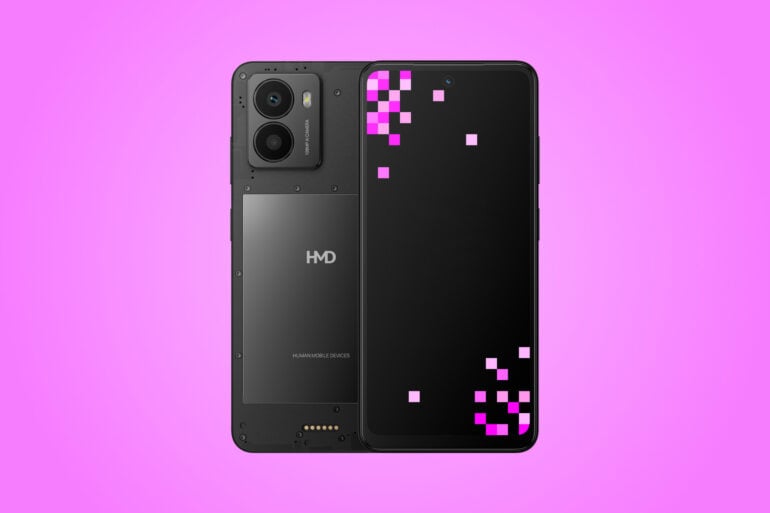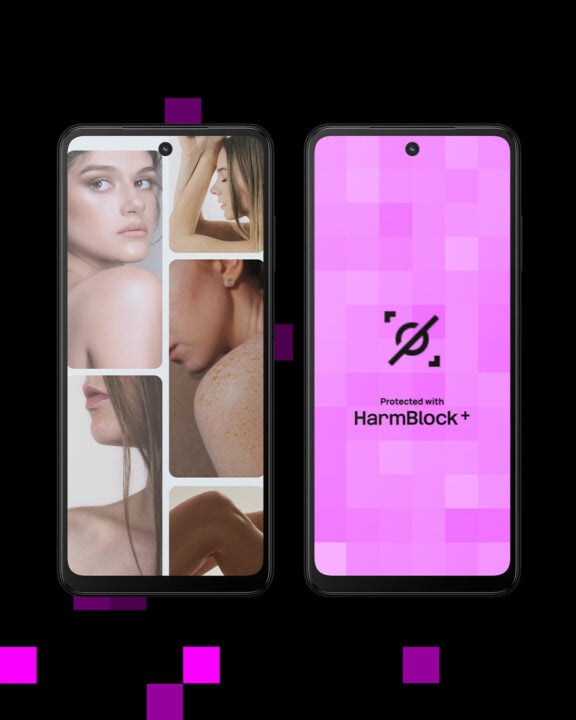
Child safety is one of the biggest topics in Australia, with the shadow of the country’s upcoming youth social media ban looming large. Now, a new tool has emerged in the form of the HMD Fuse, a phone that blocks users from viewing sexually explicit content at a system level.
HMD’s $799 phone uses “HarmBlock+”, a subscription-based AI technology from British company SafeToNet that aims to prevent children from accessing nude content. HMD says the AI is “ethically trained on over 22 million harmful images” and works to block naked imagery visible on the phone’s screen. The phone comes with 12 months of HarmBlock+ out of the box, with the ongoing cost priced at $26.95 per month.
In a pre-announcement demo, the HMD Fuse was shown attempting to access pictures of naked adults via a web browser and through a messaging app, in addition to trying to use the camera to take a nude photo. After a split second, the phone blocked every attempt with a full-screen pop-up, which could only be dismissed by navigating away from the content.

Looking at the data
32% of Australian children between 8 to 15 surveyed by HMD said they had been shown sexual or violent content on social media and messaging apps, while 49% reported being scared or upset by content they had seen. Meanwhile, research from the eSafety Commissioner found that 74% of children aged between 10 to 17 have been exposed to harmful content online.
James Robinson, Vice President at HMD, hopes that the Fuse will make it easier for parents to gradually introduce children to phones and the online world.
“This is the first step in rewriting the rulebook on family tech,” Robinson said. “We’re not just giving kids access to technology; we’re teaching them how to navigate it safely.”

A key feature of the HMD Fuse is its modular operating system. With HarmBlock+ active, parents can use their phone to control which apps children can access, permit contacts for messages and calls, and track the device’s location.
By default, the phone has barebones functionality, limited to core functions like texts and calls. Over time, parents can gradually introduce additional apps, including web browsers, streaming services, and social media platforms. HMD’s idea is that it lets parents slowly introduce children to phones in a highly controlled environment.
What about the hardware?
When announcing the phone, HMD mainly focused on software and how the operating system-based parental controls worked.
From a hardware perspective, the HMD Fuse uses a 6.56-inch 720p display, with 6GB of RAM and 128GB of storage on the inside. It runs on the same Snapdragon 4 Gen 2 chipset as the $499 HMD Fusion, albeit with less onboard memory and storage.
The Fuse has a standard 5,000mAh battery capacity, supporting up to 33W wired charging speeds. In a rare move for modern phones, there’s also a 3.5mm audio jack. Rounding out the hardware stack is a 108MP main rear camera and a 2MP depth sensor, with a 50MP selfie lens.

HMD confirmed that the Fuse will ship with Android 15, supporting two years of operating system updates and three years of regular security updates.
Like the HMD Fusion, the Fuse has a modular design; it comes with two ‘outfits’, cases that add extra functionality, including one with a built-in ring light.
The HMD Fuse launches in Australia on 28 August through Harvey Norman and Officeworks, to be followed by an upfront deal from Optus.
The post HMD Fuse blocks nude content from appearing on kids’ phones appeared first on GadgetGuy.



0 (mga) komento:
Mag-post ng isang Komento